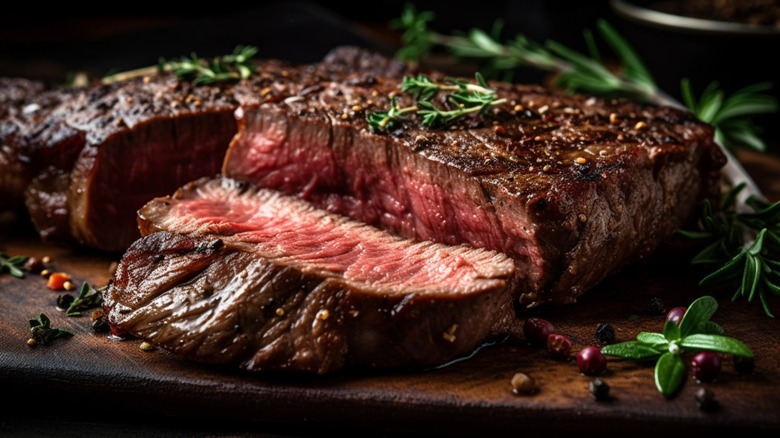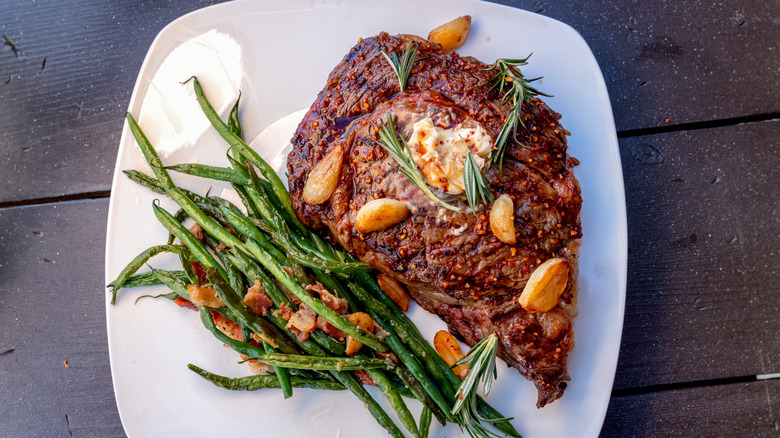The Sweet Spot For Choosing A Steak By Thickness
Seasoned chefs will know that selecting the perfect cut of steak to cook is an art all in itself. From having to find the correct cut that has just the right amount of marbling, and, in some cases, even the correct amount of dry aging, there's a lot of work that goes on even before the steak hits the grill. Outside of these common considerations, though, another thing that you should keep in mind the next time you drop by your local butcher is how thick the steak is.
Steaks come in various thicknesses, each affecting tenderness and flavor. For example, New York strips and porterhouses are often found in thicker cuts of 2 to 3 inches, while flank and skirt steaks are typically thinner, usually less than an inch thick.
So, what's the best thickness for a steak? For most cuts, the ideal thickness is right in the middle of these two extremes — around 1 to 1.5 inches. This thickness strikes the perfect balance: It's not so thin that the steak becomes chewy or dries out easily, yet it's not so thick that it takes too long to cook. Most importantly, this size will also give you enough time to sear a delicious, flavorful crust onto your steak without the risk of overcooking.
The differences between thicker and thinner steaks
Depending on its thickness, a steak will behave differently when you put it on the heat. Thick-cut steaks (2 inches or more), such as New York strips and ribeyes or tomahawks, require longer cooking times. If you use a grill, it can take you between three to five minutes on each side to cook. In return for the longer wait, the thicker steak will naturally offer more leeway for error. You'll have an easier time cooking it so that it has just the right level of doneness. Plus, the larger size means a more filling meal.
On the flip side, naturally thin steaks, such as the flank or skirt, cook in a flash. Often sliced to a mere ½ or even ¼-inch thickness, these cuts require a deft hand and careful timing. Typically, they're seared for just 2 to 3 minutes before being pulled off the heat to gently finish cooking with the residual internal heat. Flank and skirt steaks can be notoriously tricky to master, as they have a propensity to dry out if overcooked.
So, when possible, you should look out for steak cuts that measure between 1 to 1.5 inches. Tell your butcher to help you out the next time you drop by to pick up a cut: Even traditionally thin-cut steaks, like a flank (bavette) steak or a skirt (jiffy) steak can be found in these thicker sizes if you ask!

